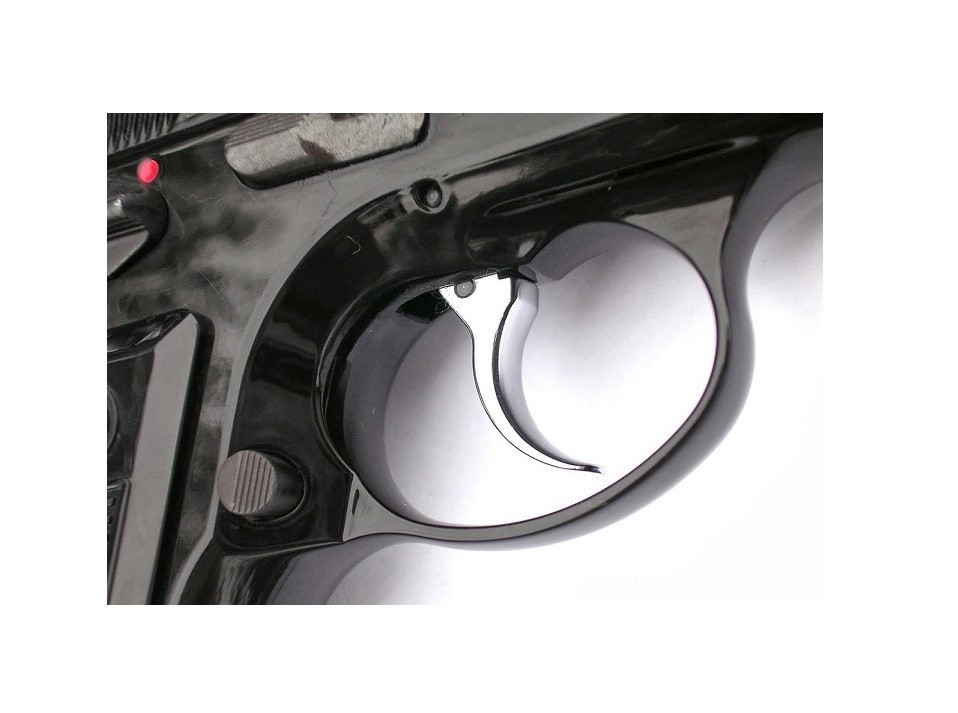When Building Your Rifle From An 80 Percent Lower Receiver, Triggers Are One Of The Few Upgrades That Can Make Shooting Easier.
Since Many People Think AR-10s Are Supposed To Be Longer Range Than An AR-15, A Good Trigger Has More Value. Let’s go over the different types of triggers available for AR-10s.
Types of AR-10 Triggers
There are four major types of triggers, but individual triggers can have multiple type-features present. This makes it a little harder to narrow down, but these types generally focus on if there are any “stages” to the trigger before it releases the hammer and how the trigger is set up.
Standard Triggers
These triggers are similar to the mil-spec trigger group, sometimes with improvements. These triggers have exposed springs and take a small amount of effort to install in the lower receiver. They are not pre-assembled but will usually run longer than other trigger styles.
To easily identify what a standard trigger looks like you just have to look and see if the inner components are visible or if they come disassembled. If you can’t do either of these, the trigger is a drop-in or cassette-style trigger.
Drop-In Triggers/ Cassette-Style Triggers
These are some of the most common types of triggers. They come pre-assembled and are one of the easier types to install. There will be little-to-no gunsmithing skills required to place one of these triggers in your lower receiver.
Drop-in triggers are also known as cassette-style triggers. These styles of triggers will usually have two plates of metal on either side of the trigger or are put into a singular trigger housing. These can be steel or aluminum and are designed to keep things out of the trigger components.
This allows them to be easily swapped in and out of the gun without the effort you need to properly set the springs in the trigger. An additional benefit is that dust and debris are less likely to go into the trigger group.
While this sounds like a good thing, using a cassette-style trigger can cause additional issues. Open style triggers allow dust and debris to fall out of the trigger mechanism if they do get in. Cassette-style/Drop-in triggers try to keep that same dust and debris out in the first place, but if debris does get into the trigger it is more likely to be trapped in a cassette-style trigger.
The ease of installation and wide availability on the market means a drop-in trigger will most likely be the trigger you use to upgrade your AR-10 with. There are many different options on the market and they include both single and two-stage triggers.
Single-stage Triggers
Single-stage triggers are designed to immediately engage the sear. This makes them very fast and consistent in terms of trigger pull and firing the gun. This means there’s no take-up or “mushy” feeling when pulling the trigger.
While many prefer this clean type of trigger pull it can have some drawbacks. Immediately sitting on the wall before the break can result in negligent discharges if your trigger is too light and your hand clenches up during stress.
This can be mitigated through training and proper technique. If you do use a single-stage trigger for accuracy, this risk is nothing to worry about since you’ll be putting in the effort to train with that trigger and understand its nuances.
Two-Stage Triggers
The next style of trigger is the two-stage trigger. Two-stage triggers have a certain level of trigger creep or slack that is not present on single-stage triggers. This creates a buffer zone of sorts. When squeezing the trigger you won’t immediately hit the wall before the shot breaks.
This first stage of the trigger pull requires a more deliberate trigger press. Some people prefer this to a single stage trigger because it requires a more conscious effort to fire. This is handy in some stressful situations and can help prevent less experienced shooters from negligently discharging their rifle.
Can AR-15 Triggers Work in AR-10s?
The short answer is yes. Due to how modern AR-10s are manufactured, AR-15 trigger groups are interchangeable with AR-10 triggers. This is because the general area that the trigger takes up does not change between the platforms.
However, using an AR-15 trigger in an AR-10 can cause some reliability issues. This is from the different requirements for firing the gun.
Since AR-10s are chambered in 7.62 NATO or .308, the strength of the trigger needs to be increased to detonate the harder primers used in these larger calibers. The hammer portion of the trigger needs to hit with more force to ensure the primer’s ignition.
AR-15 triggers may not have as strong of a hammer strike and may result in light strikes, failures to detonate, or similar malfunctions. Some AR-15 triggers do have the strength to consistently detonate harder primers, but this will require some research to figure out which models these are.
Additional Considerations
It’s important to test new triggers over multiple range sessions to see if there are any inconsistencies or problems that may result from the new trigger. Light primer strikes, jamming, or other odd malfunctions may be an indicator that your trigger was either installed incorrectly or has a deficiency from the factory.
Most parts upgrades are to increase the capability and reliability of the rifle. Checking the function of the rifle, especially with live fire, helps ensure that your new AR-10 trigger is a benefit rather than a liability.

